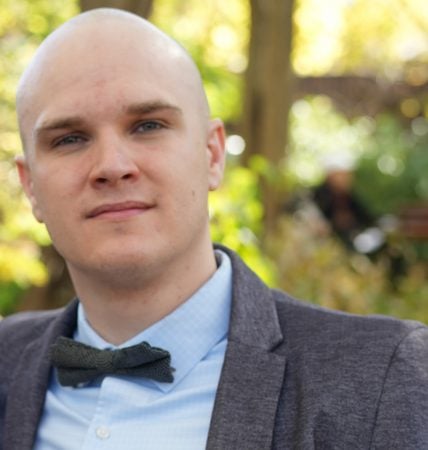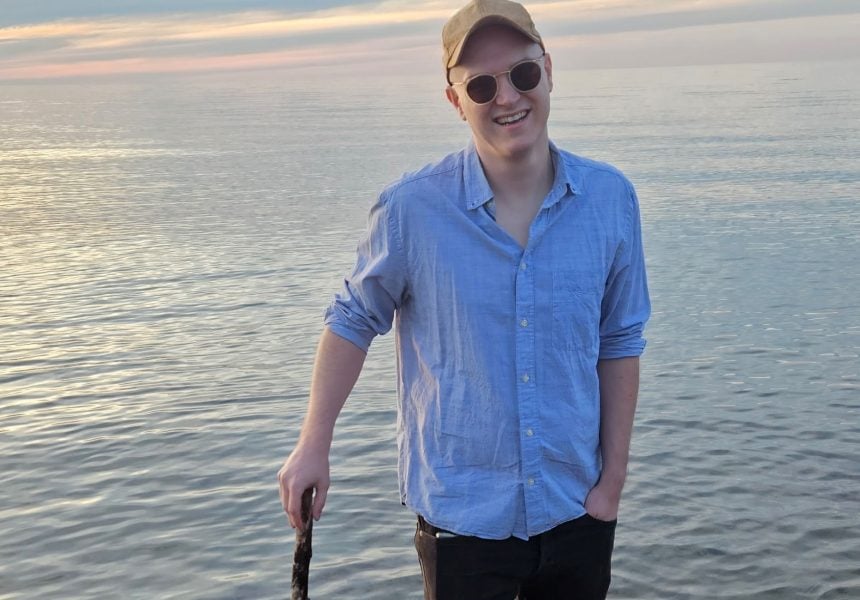Assistant Teaching Professor Gabriel Draughon grew up in Metro Atlanta. He comes to Michigan Tech from the University of Michigan, where he earned an MS and PhD in Civil Engineering (Intelligent Systems). He earned his BS in Biosystems Engineering at the University of Kentucky. “I keep moving more north!”
What drew you to Michigan Tech?
I was drawn both by the area and by the University—specifically the Michigan Tech Department of Engineering Fundamentals, where the energy and passion for making engineering more welcoming and less daunting for first year engineers is unmatched!
What is your primary area of research and what led you to it?
My research area involves Smart Cities, and how sensing technologies in urban settings help us better understand how people move through, interact with, and derive benefits from social infrastructure.
I love working with sensors and smart infrastructure, which led me to the Laboratory of Intelligent Systems (LIST) at University of Michigan during my graduate studies. More importantly, I was drawn to the idea of how incorporating sensing technologies could improve the lives of people and better manage our resources.
“We live in a shared world.
How can we make it better?”
Can you share a little more about your research and what you like about it?
Specifically I focus on social infrastructure (public parks, squares, markets, bus stops, etc.). I write deep learning-based software to ingest image streams taken by cameras in public parks to autonomously generate usage reports, in order to quantify performance of the space. Where people are entering/exiting? Which assets do they interact with most? What activities are they engaged in? How social is the space? This helps park managers, owners, and operators better design, manage, and plan their spaces. It enables data-driven decision making. With this data park owners can understand where to invest funds, what assets drive social interactions, and when to run different social programs.
I like writing the software and working with cool things like convolutional neural networks, but most importantly I like the application. When I am “out in the field” I am usually in public parks—which is quite nice! I also am drawn to the idea of understanding how our infrastructure can help build a community’s social capital and impact community members’ mental and physical health.
What do you consider an important long-term goal for your research, teaching, or outreach?
I would like to engage undergraduate students with my research and show them the types of impact we can have as engineers. Specifically I hope to engage students from under-represented groups in STEM (first generation students, minorities, women). I want to help build students’ sense of self-efficacy. Measurable long-term goals would be to increase retention rates of underrepresented groups.
What do you hope to accomplish, as an educator and as a researcher, over the next few years?
I want to instill a passion in our student base for using their skills to help others. We live in a shared world; how can we make it better?
What do you like to do in your spare time?
Lots of things! Outdoor: Mountain biking, hiking, and rock climbing. Indoor: Video games, movies, and board games.
What’s your favorite book?
“Lord of the Rings,” by JRR Tolkien.
Any favorite spots on campus, in Houghton, or in the UP?
Mine are the Tech Trails, KC Bonkers, and the Porkies (Porcupine Mountains Wilderness State Park).
“Try not to get overwhelmed with school work and be sure to set aside time to invest in friends, family, and hobbies.”

